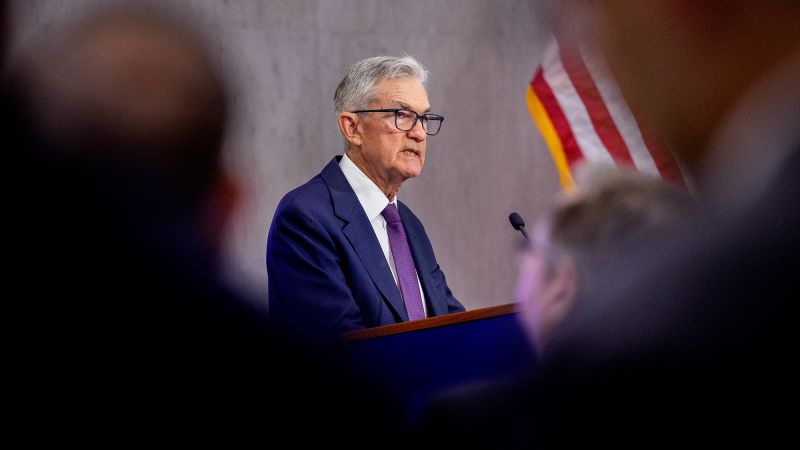In a striking collision of economic policy and political maneuvering, Federal Reserve officials are navigating increasingly turbulent waters as they assess the potential impact of President Trump’s proposed sweeping tariffs on the American economy. The central bank finds itself at a critical juncture where monetary policy decisions must account for both inflation concerns and the looming shadow of aggressive trade measures.
“The proposed tariff regime represents a significant unknown variable in our economic forecasting models,” said Federal Reserve Governor Christopher Waller during yesterday’s economic forum in Chicago. “We’re dealing with potential price pressures that could materialize rapidly if implemented as described.”
The Federal Reserve’s latest economic projections reflect this cautious stance, with officials signaling they may need to maintain higher interest rates for longer than previously anticipated if tariffs trigger a new wave of inflation. According to internal analyses from the central bank, a 10% universal tariff could potentially add up to 0.5 percentage points to consumer prices within the first year of implementation.
Market participants have reacted with notable volatility to these developments. The uncertainty surrounding trade policy has created what Morgan Stanley chief economist Ellen Zentner calls “a dual-track scenario planning environment” for investors and businesses alike. This sentiment was evident in yesterday’s trading, with the S&P 500 experiencing its most significant single-day fluctuation in three months.
The implications extend beyond America’s borders. Canada’s Finance Minister Chrystia Freeland emphasized the integrated nature of North American supply chains during her address to Parliament yesterday. “When tariffs disrupt established trade patterns, the economic repercussions are rarely contained within a single jurisdiction,” she noted, highlighting the potential for retaliatory measures should aggressive trade barriers be implemented.
For American consumers, the stakes are particularly high. Research from the Peterson Institute for International Economics suggests that the proposed tariff structure could cost the average American household approximately $2,400 annually in increased prices, with disproportionate impacts on lower-income families who spend a larger percentage of their income on imported goods.
Former Federal Reserve Chair Janet Yellen expressed concern about the timing of these proposed trade measures. “Introducing significant tariffs while the economy is still adjusting to post-pandemic conditions and recent monetary tightening creates a complex policy environment that could easily lead to unintended consequences,” she stated during an interview with Bloomberg Television.
The uncertainty extends to the manufacturing sector, where businesses are already adjusting supply chains in anticipation of potential trade barriers. A recent survey by the National Association of Manufacturers found that 62% of member companies are exploring alternative sourcing strategies, with 41% considering price increases to offset potential tariff costs.
As Federal Reserve officials prepare for their next policy meeting, they face the delicate task of balancing inflation concerns against growth considerations in an environment where trade policy could dramatically alter economic fundamentals. Chairman Jerome Powell has repeatedly emphasized the Fed’s data-dependent approach, but privately, officials acknowledge the challenge of making monetary policy decisions amidst significant policy uncertainty.
As global markets continue to digest these developments, a profound question emerges: Can the Federal Reserve effectively maintain price stability while navigating the economic crosscurrents created by potentially dramatic shifts in America’s trade relationships, or are we witnessing the early stages of a fundamental realignment in how monetary and trade policies interact in the modern global economy?


















